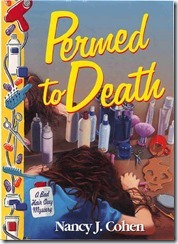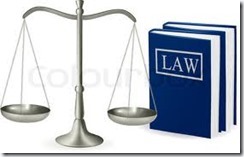When Characters Stop Being Literal and Become Real
J.H. Bogran
On the dedication page of Harry Potter and the Half Blood Prince, author J.K. Rowling dedicates the book to her daughter, proclaiming Harry is her ink-and-paper twin. In just one sentence, Mrs. Rowling demonstrates how real the characters are for her.
Every writer worth his salt knows that only when we believe and treat our character as real people, they will become so to the readers. Why? I could bet it is because our perception of the character seeps into them while we type them. 
I don’t pretend to preach to the converted, what I’d like to share today is the way I develop my characters, not that I think it is the one and only way to go about it.
After I decide the story I want to tell, I spend time developing a list of characters that I think are required to tell the story. The list includes the lead, lead’s love interest if any, the antagonist, and the secondary characters. I don’t waste time on the character with bit parts; I trust they will show up when I need them for a particular scene. Yeah, it’s kind of “if I build it, they will come.”
Two books that have helped me with characters and how to write them are Angela Ackerman/Becca Puglisi’s The Emotion Thesaurus, and the other one is Dynamic Characters by Nancy Kress.
The main characters get special attention, of course. I prepare a worksheet where I list name, description, personality, profession and extras. The first four are pretty self-explanatory. Extras can be tiny little things like if he/she smokes, or notes the appalling story of how they became the person they are at the start of my book.
For the physical description I cheat a little bit, if it can be called like that. I use people I’ve met, sometimes movie or TV actors, but someone to anchor me to what they look like and keep me from changing hair or eye colors between chapters. Their personality starts relatively empty as I’d like to leave room for the characters to grow. Of course, that character worksheet keeps getting revised while I’m writing the story.
The secondary characters are not as developed, but I keep a close watch on them as sometimes they come back with surprises, or they make appearances in other stories. For example, the doctor who treated my lead female character suffering from Multiple Personality Disorder in the story Love Me Two Times, turns out to have a younger brother. In the opening chapter of my new novel Firefall, Doctor James Martin is performing an intervention on his younger brother Sebastian, who is the lead character in that novel.
One tip I learned during a ThrillerFest class on craft imparted by Robert Dugoni was to give each character a unique trait. It can be anything from always chewing gum to a limp. The idea is that the trait would be big enough to make them appear better than two-dimensional.
The making of my character is far from a refined technique, but it works for me, so I’m sticking with it. They become real to me because I can picture them in my head.
I’m curious to know how others do it, so please leave a comment if you can. Thanks.
<><><>
J. H. Bográn, born and raised in Honduras, is the son of a journalist. He ironically prefers to write fiction rather than fact. José’s genre of choice is thrillers, but he likes to throw a twist of romance into the mix. His works include novels and short stories in both English and Spanish. He’s a member of the Short Fiction Writers Guild and the International Thriller Writers, where he also serves as the Thriller Roundtable Coordinator and contributor editor their official e-zine The Big Thrill.
Website at: http://www.jhbogran.com
Facebook: http://www.facebook.com/jhbogran
Twitter: @JHBogran
Goodreads: http://www.goodreads.com/author/show/4307673.J_H_Bogran
Amazon author page: https://www.amazon.com/author/jhbogran
About Firefall:
After losing his wife and son in an air crash, former NYC firefighter Sebastian Martin is spiraling downward into alcoholic oblivion. Then his brother sets him up with a last-chance job investigating insurance fraud, but his first case takes a deadly turn as he crosses path with an international ring of car thieves. Sebastian ends up strapped to a chair facing torture at the hands of a former KGB trainee who enjoys playing with fire on his victims to get answers.
Firefall Buy Links:
Rebel E Publishers: http://rebelepublishers.com/about/our-books/firefall/
Amazon: http://www.amazon.com/Firefall-ebook/dp/B00F6VYDE2
Smashwords: https://www.smashwords.com/books/view/355941
















